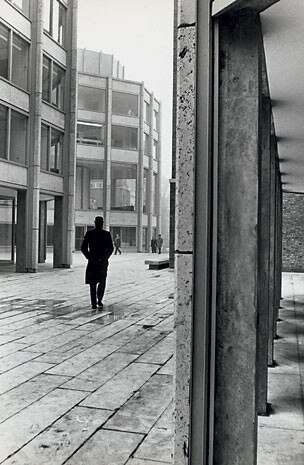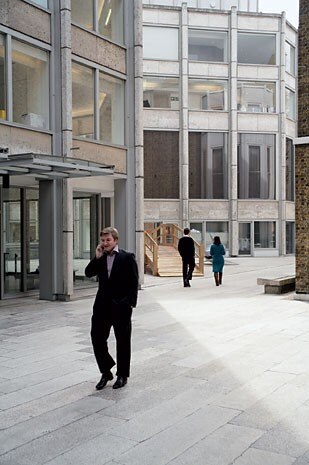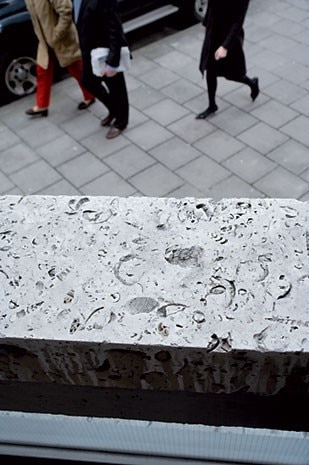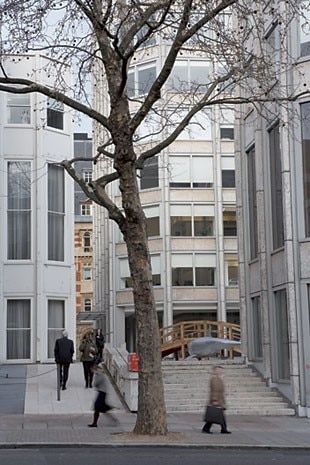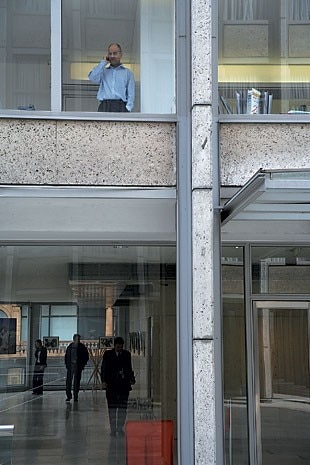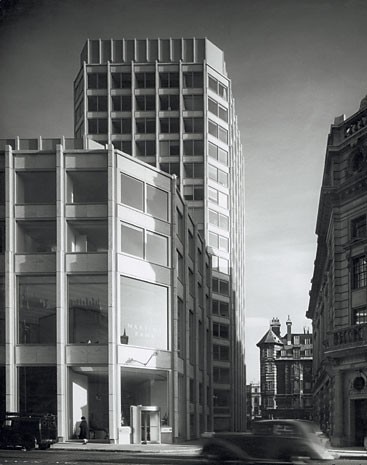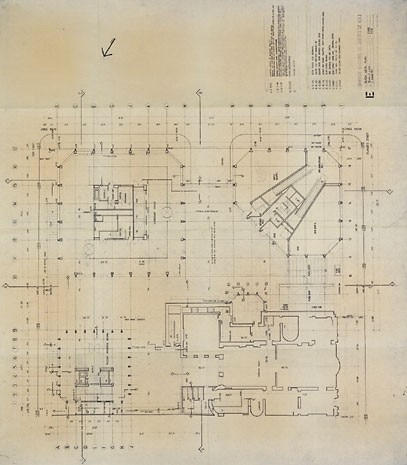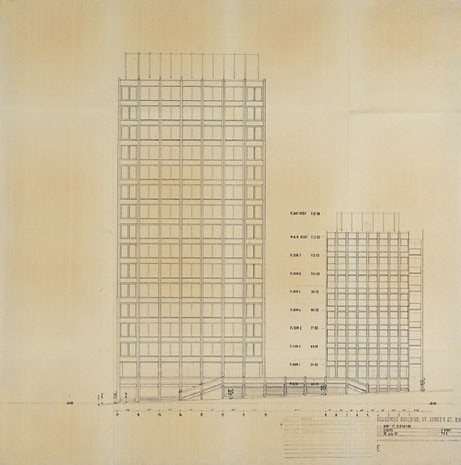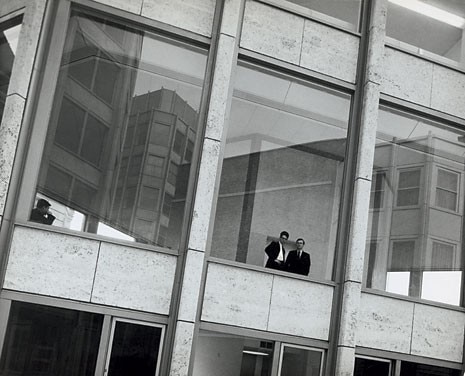The competition for an urban redesign on a small scale, in which they had now decided to participate, was held by The Economist to enlarge its headquarters in central London. With the demolition of existing buildings and the extension of the neoclassical brick and stone Boodle’s Club, which needed more rooms for its members, commercial, office and residential spaces could now be planned on the basis of different urban relationships.
The winning entry submitted by the two architects broke down the perfect image of another Miesian icon (the Seagram Building in New York) into three isolated towers, each with different volumes, proportions and purposes, closer to the scale of the historic fronts facing west on St James’s Street. The space in front of the New York skyscraper became a quiet inner square, where the circulation and pace of vehicular and pedestrian traffic were split and the relationship with the interiors of the buildings was suggested by the continuity of the paving. The Martins Bank building on four levels is composed of a 3.2-metre double module, and with the tall windows of the reception hall on the first floor it echoes the characteristics of the street. Behind it, The Economist’s 14- storey tower, with its archives on the mezzanine and private spaces leading off a ring corridor on the top floor, adopts the same module; while behind Boodle’s Club, extended with a vertical sequence of bow-window against a plain redbrick backcloth, a 7-storey block of flats uses the 1.6-metre module. This common modularity in the design of surfaces – the invention of a successful urban effect – forms a bevel-edged frame of vertical fillets in stone and horizontal partitions in grey metal.
Onto it Peter sketched an axonometric projection to describe the dimensions of the volumes and their reciprocal distances, signs that move along and mediate the movements in space. In the Smithsons’ words, the level of the inner square, slightly higher than the surrounding streets, “offers a pedestrian pre-entry space, in which there is time to re-arrange sensibilities, preparatory to entering the building to visit or work. The city is left outside the site boundary, another sort of intermediary place is contributed to the city; if – as in the past – many owners contribute the- se pauses then other movement patterns are made possible; the man in the street can choose to find his ‘secret’ way about the city, and can develop further urban sensibilities, evolving his own contribution to quality of use”.
The Smithsons’ attention to city spaces was recorded in the panel presented two years earlier at the CIAM in Aix-en- Provence, with Nigel Henderson’s street photographs and in the publication of their studies of urban structure. Here one finds how they stimulated the environmental values of what was the first piece of modern British architecture to be listed for protection by the environment ministry. Gordon Cullen, author of Townscape, outlines its relations between the volumes of the towers. The materials and surfaces unite poetic quality with easy maintenance: the fillets on the towers and the paving in the square are in Port-land stone, which is rich in marine fossils, but it remains unstained by water as rain is channelled into metal grooves. The same care and consistency can be found in everything the two architects do, be it in their construction of this urban fragment, in ordinary objects or in the freedom of theoretical works, or again in the small Upper Lawn pavilion built shortly afterwards on 18th-century factory walls in the Wiltshire countryside, for themselves and “from which to enjoy the seasons”. The same loving care is seen in the outlines of big trees standing around that small building, or in the words written next to a photo of their London design: “The day the tree arrived.” In 1990 Peter was to say: “When we draw a tree it is a tree that is there… otherwise it is the tree we would plant”.
